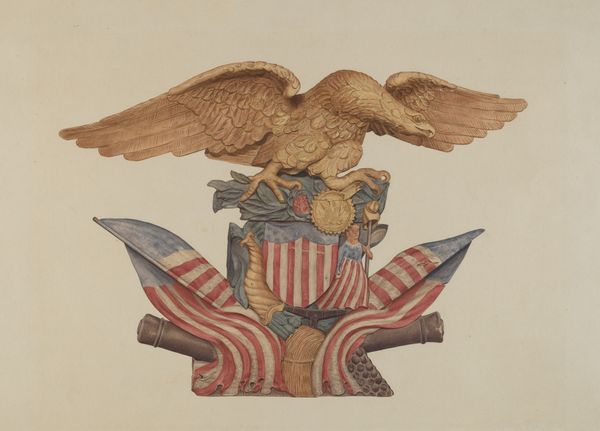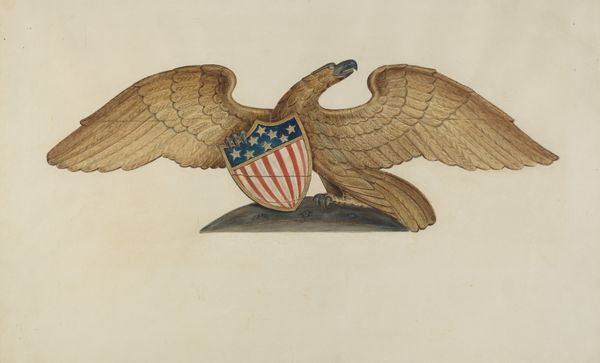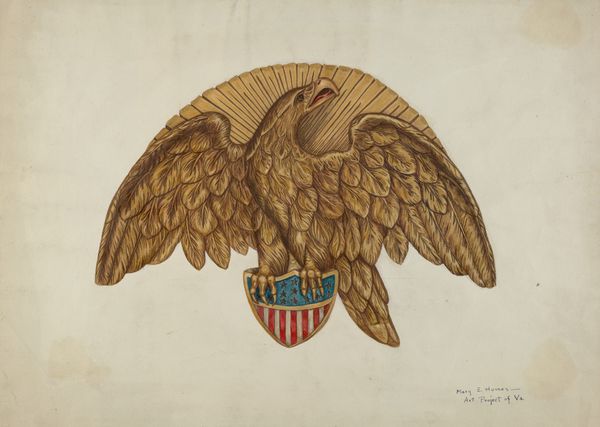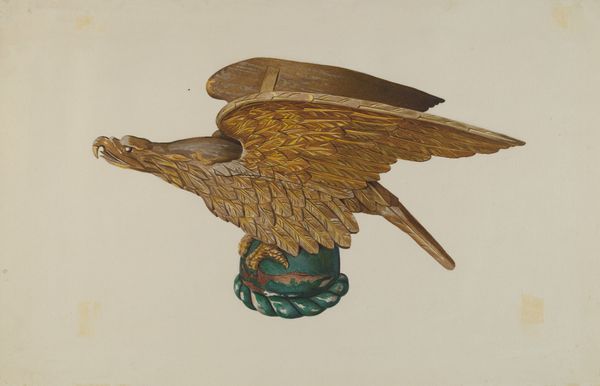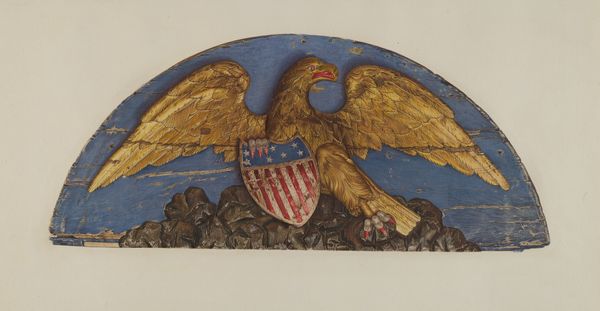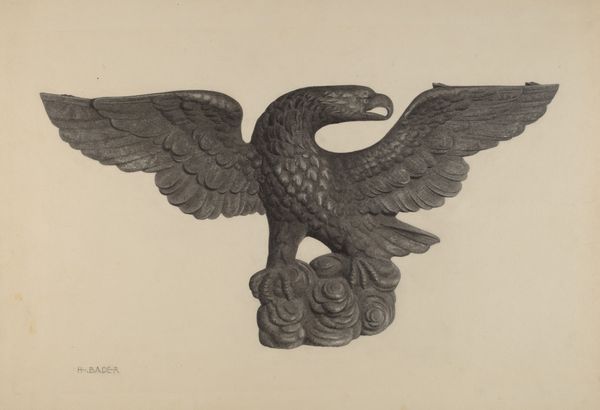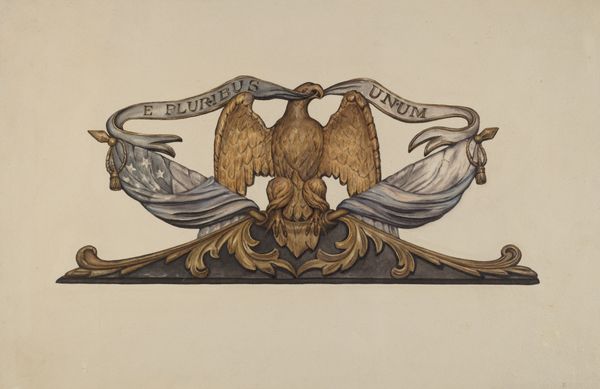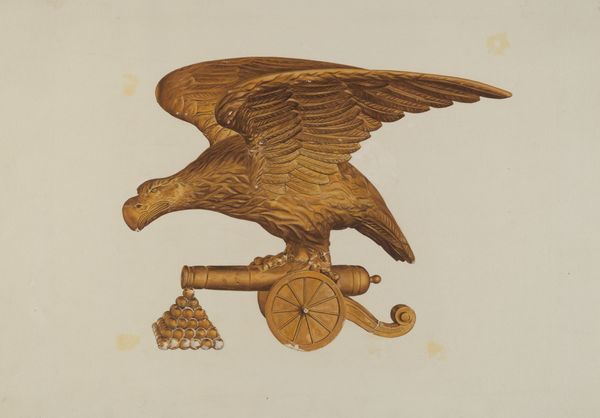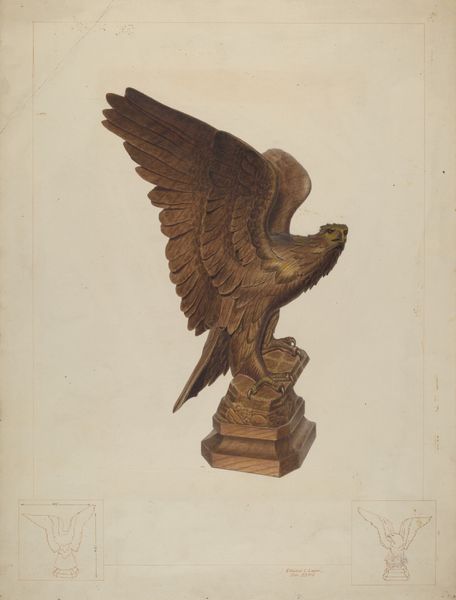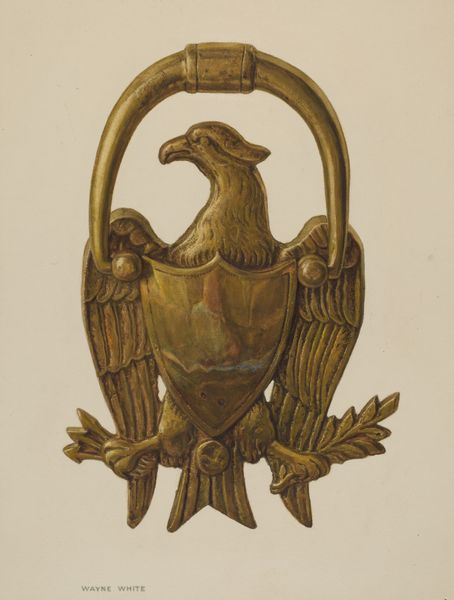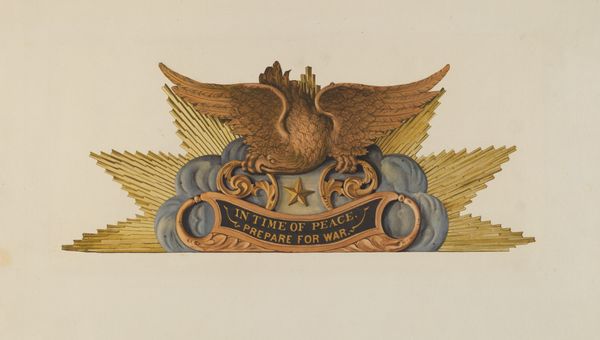
drawing, watercolor, pencil
#
drawing
#
figuration
#
watercolor
#
pencil drawing
#
pencil
#
watercolour illustration
#
realism
Dimensions: overall: 30 x 44.6 cm (11 13/16 x 17 9/16 in.)
Copyright: National Gallery of Art: CC0 1.0
Curator: This drawing, dated between 1935 and 1942, depicts the eagle figure that adorned the USS Enterprise. It employs a combination of pencil and watercolor. Editor: The sepia tones give it a distinctly aged feel. It’s odd how detailed the eagle is, almost hyper-realistic, contrasted against the stark blankness of the background. There’s a powerful stoicism emanating from it. Curator: The Enterprise was commissioned in 1938, so the drawing was likely a preliminary design or a study of the ship's ornamentation. Think of the context: the Navy and the government employing artists. It was a potent form of propaganda. Editor: That makes sense given the subject matter. Looking at the “E Pluribus Unum” banner it holds... it appears hand-painted, likely a stenciling technique or careful freehand, judging from the subtle variations in the letters. I wonder who actually made this, some artisan quietly fulfilling the demands of military symbolism? Curator: Precisely! And consider the function beyond mere decoration. The eagle embodies strength, freedom—key ideals the US wanted to project, particularly as the world edged closer to war. It's carefully designed to stir emotions, a visual instrument. Editor: The layering of the pencil work to build up shadows and highlights adds dimension, as well as making the illustrated carving visually tactile. There is also some level of implied fabrication here too; someone somewhere had to produce these emblems en masse for each naval ship in time. The consumption here feels pointed. Curator: Absolutely. And those artistic decisions were often intertwined with political motivations. By representing power, it helped bolster popular support for military expansion, reflecting and reinforcing existing ideologies. Editor: Interesting. I hadn’t thought of the symbolic connection between the artist’s craft and the shipbuilding industry at that time. Curator: Art always has a social and political function. And by studying it, we reveal broader ideological frameworks in action. Editor: Agreed. Examining the methods and intent behind the artwork encourages new questions regarding materiality, propaganda, labor, and the consumption of such icons within their relevant cultural settings.
Comments
No comments
Be the first to comment and join the conversation on the ultimate creative platform.
